In Fig. a pulley is shown which is frictionless and a ring of mass m can slide on the string without any friction. One end of the string is attached to point B and to the other end, a block 'P' of mass m is attached. The whole system lies in vertical plane.
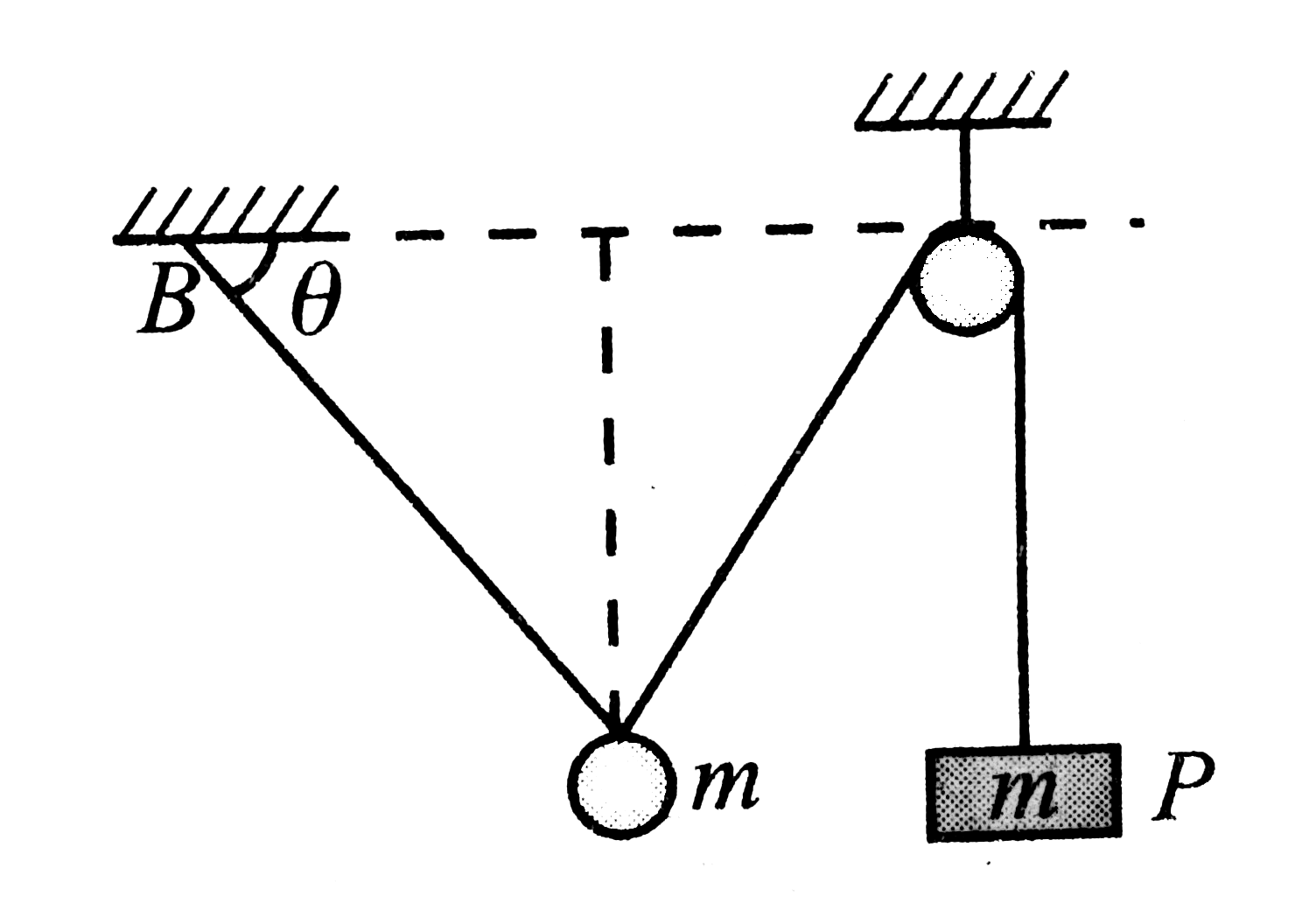 Now another block 'C' of same mass m is attached to the block 'P' and system is released from rest. If a1 and a2 are the magnitudes of initial accelerations of ring and blocks, respectively, then
Now another block 'C' of same mass m is attached to the block 'P' and system is released from rest. If a1 and a2 are the magnitudes of initial accelerations of ring and blocks, respectively, then
a1+a2=g
a1+2a2=g
a1=2a2
2a1=a2
The correct Answer is:B
2Tsinθ−mg=ma1,θ=30∘
2mg−T=2ma2
Simplify to get a1+2a2=g
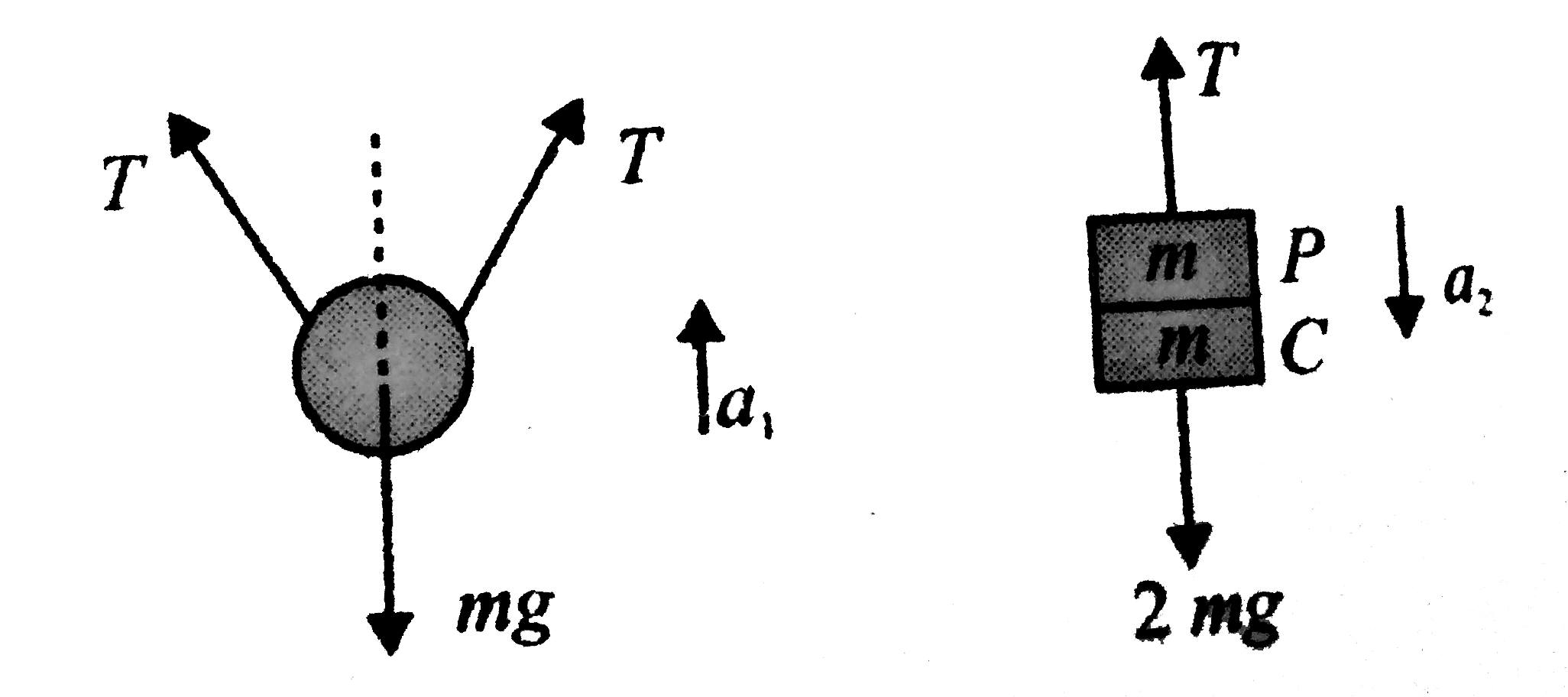
From constraints we have initially
a2=2a1sinθ⇒a2=a1
Topper's Solved these Questions
- BOOK - CENGAGE PHYSICS ENGLISHCHAPTER - CENTRE OF MASSEXERCISE - Integer16videos
CENTRE OF MASS
- BOOK - CENGAGE PHYSICS ENGLISHCHAPTER - CENTRE OF MASSEXERCISE - Fill In The Blanks2videos
CENTRE OF MASS
- BOOK - CENGAGE PHYSICS ENGLISHCHAPTER - CENTRE OF MASSEXERCISE - Assertion - Reasoning2videos
CENTRE OF MASS
- BOOK - CENGAGE PHYSICS ENGLISHCHAPTER - CALORIMETRYEXERCISE - Solved Example13videos
CALORIMETRY
- BOOK - CENGAGE PHYSICS ENGLISHCHAPTER - DIMENSIONS & MEASUREMENTEXERCISE - Integer2videos
DIMENSIONS & MEASUREMENT
Similar Questions
In Fig. a pulley is shown which is frictionless and a ring of mass m can slide on the string without any friction. One end of the string is attached to point B and to the other end, a block 'P' of mass m is attached. The whole system lies in vertical plane.
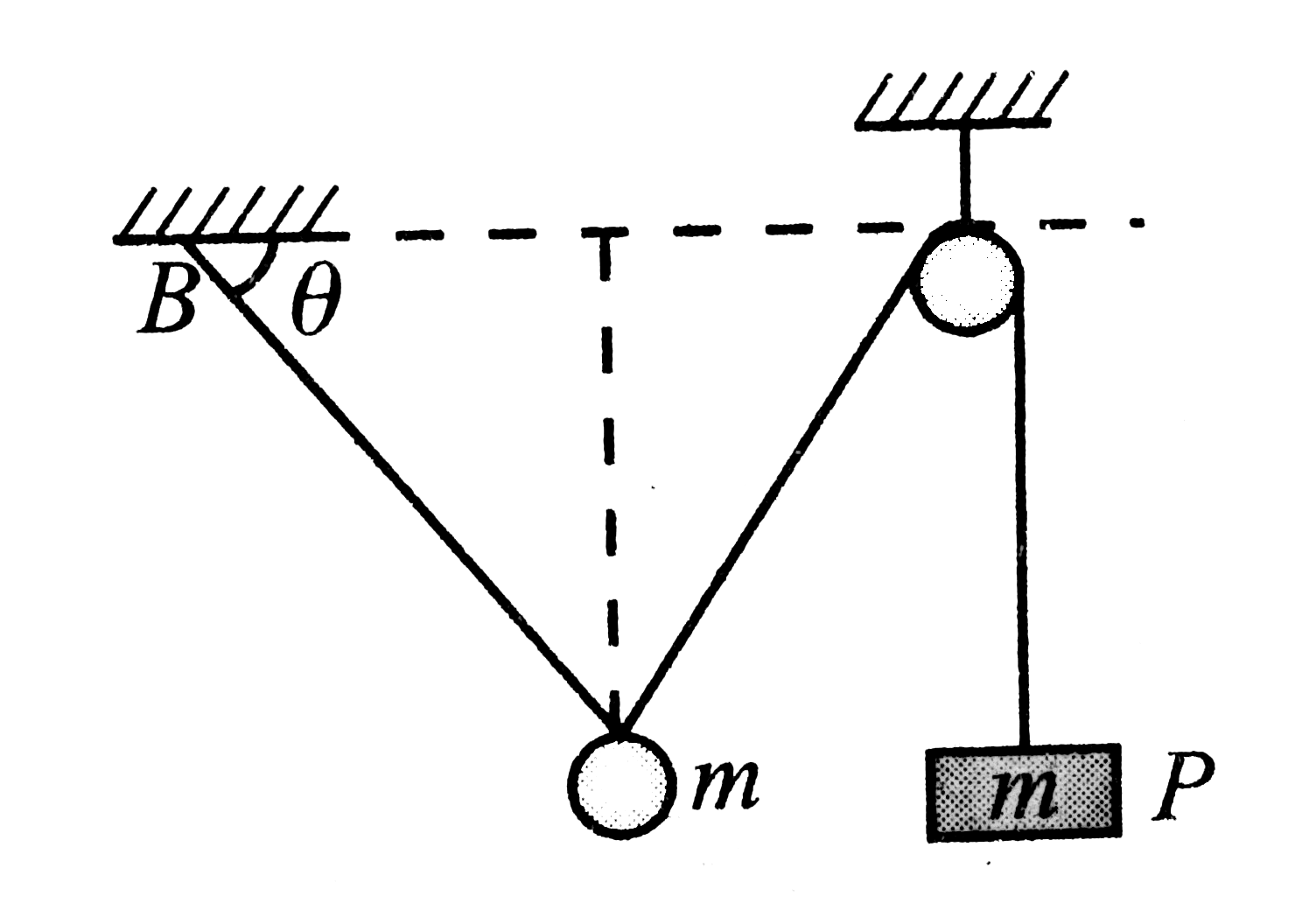 If the system is released from rest, it is found that the system remains at rest. What is the value of θView Solution
If the system is released from rest, it is found that the system remains at rest. What is the value of θView SolutionIn Fig. a pulley is shown which is frictionless and a ring of mass m can slide on the string without any friction. One end of the string is attached to point B and to the other end, a block 'P' of mass m is attached. The whole system lies in vertical plane.
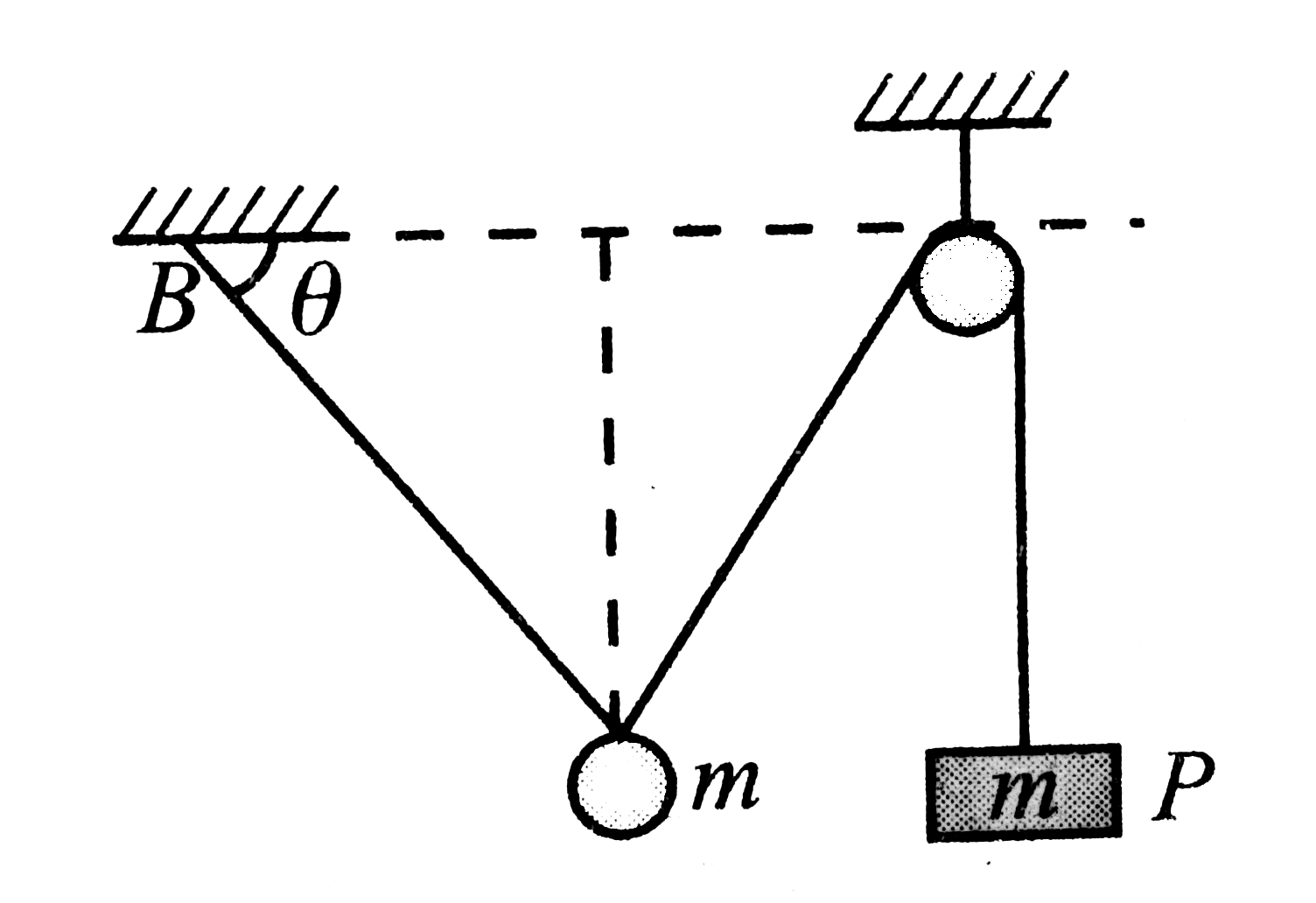 If block 'C' mentioned above was released from some height and collided with 'P' with some velocity u, then find the velocity of the ring just after the collision. The collision is perfectly inelastic. View Solution
If block 'C' mentioned above was released from some height and collided with 'P' with some velocity u, then find the velocity of the ring just after the collision. The collision is perfectly inelastic. View SolutionA block of mass m is attached with two strings as shown in figure .Draw the free body diagram of the block.
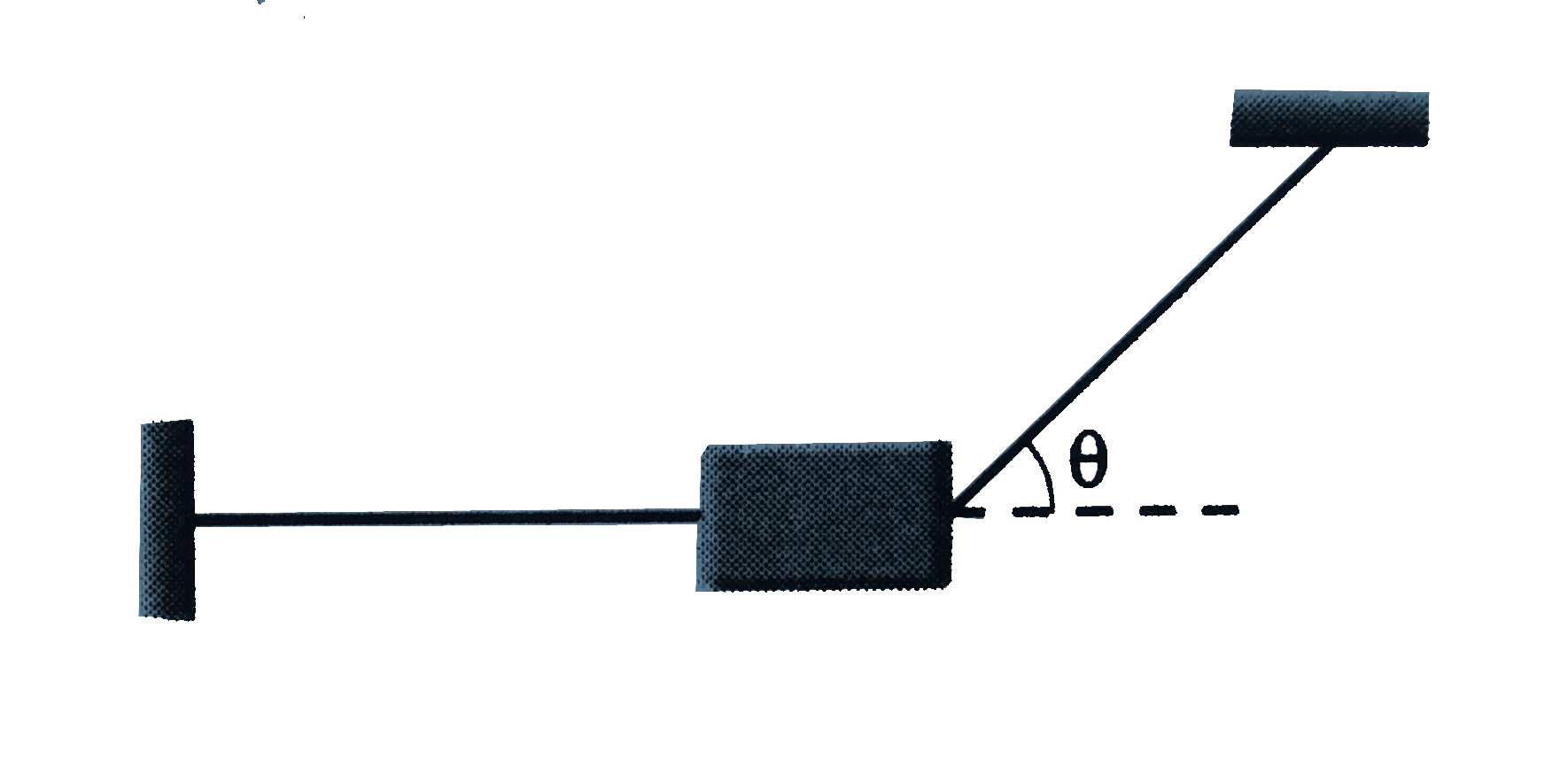 View Solution
View SolutionA blocked of mass m is attached with two strings as shown in figure .Draw the free body diagram of the block.
 View Solution
View SolutionThe block shown in figure has a mass M and descends with an acceleration a. The mass of the string below the point A is m. Find the tension of the string at the point A and at the lower end.
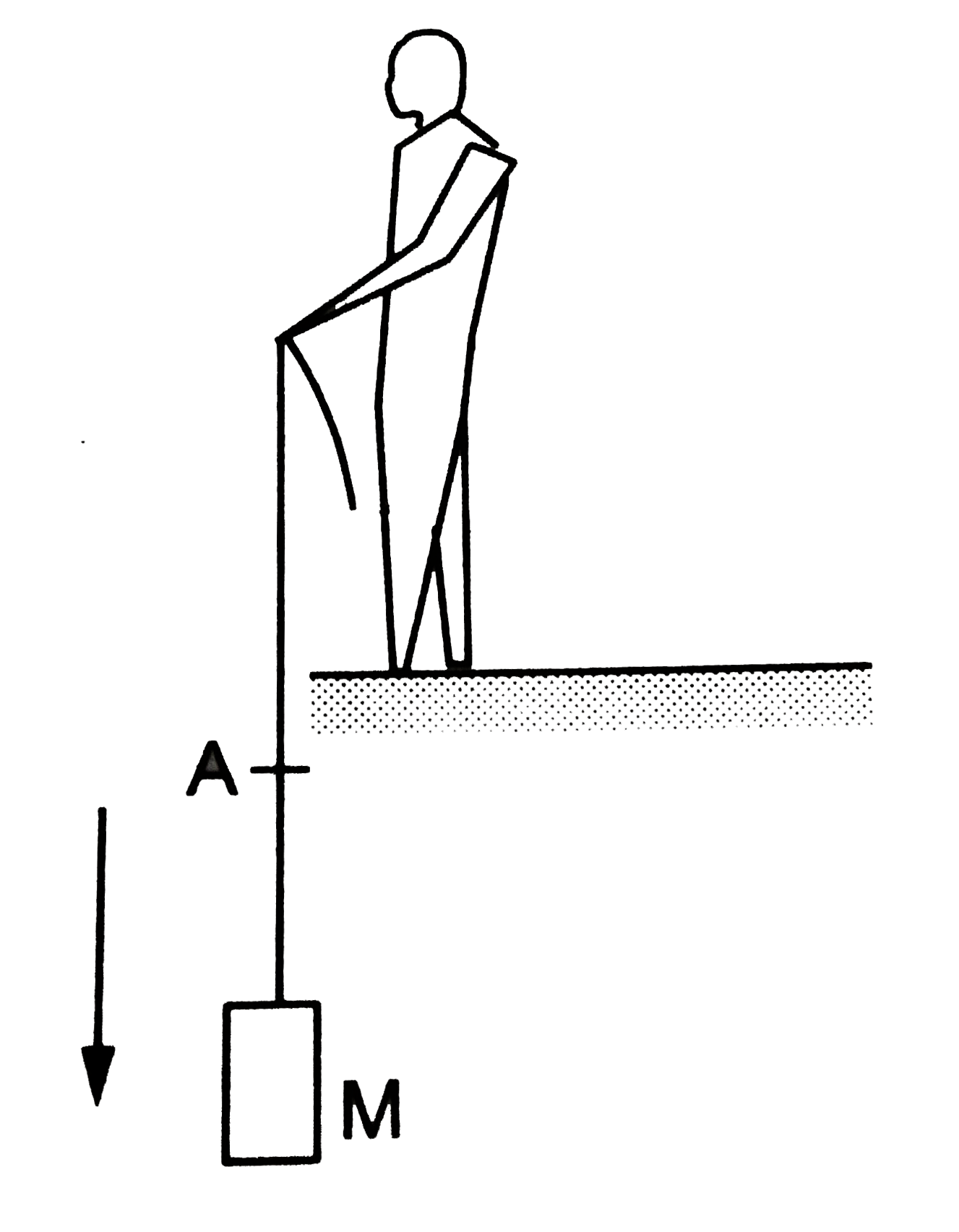 View Solution
View Solution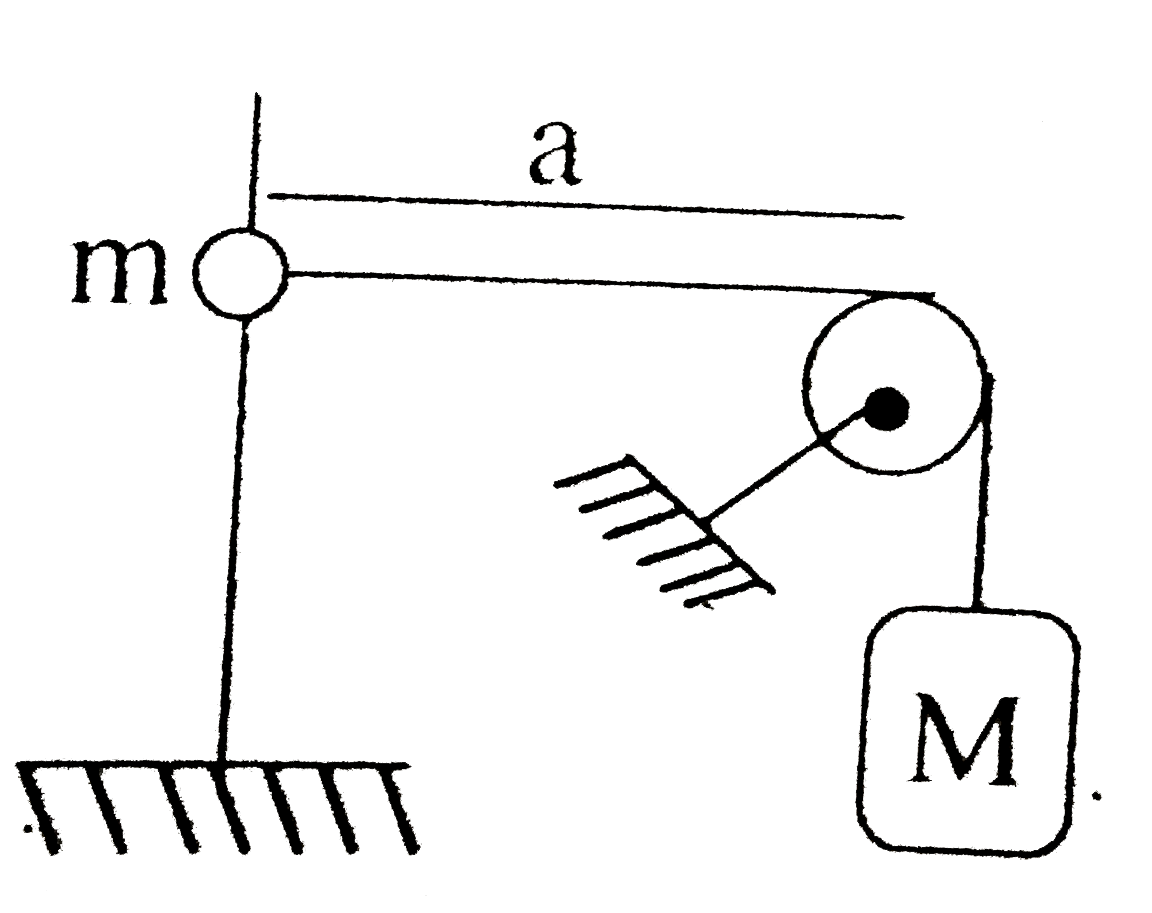
A ring of mass m can slide on the vertical smooth rod. Ring is connected by block with string as shown in figure. Pulley is of mass-less and smooth the system is released from reast. Initial tension in string isView SolutionTwo block A and B of mass M & 3M are connected through a light string. One end of the string is connected to the blcok B and its other end is connected to a fixed point S as shown in fig. Now a force F is applied to block B. find the acceleration of block A & B.
 View Solution
View SolutionWhat is the mechanical advantage of single fixed pulley:-
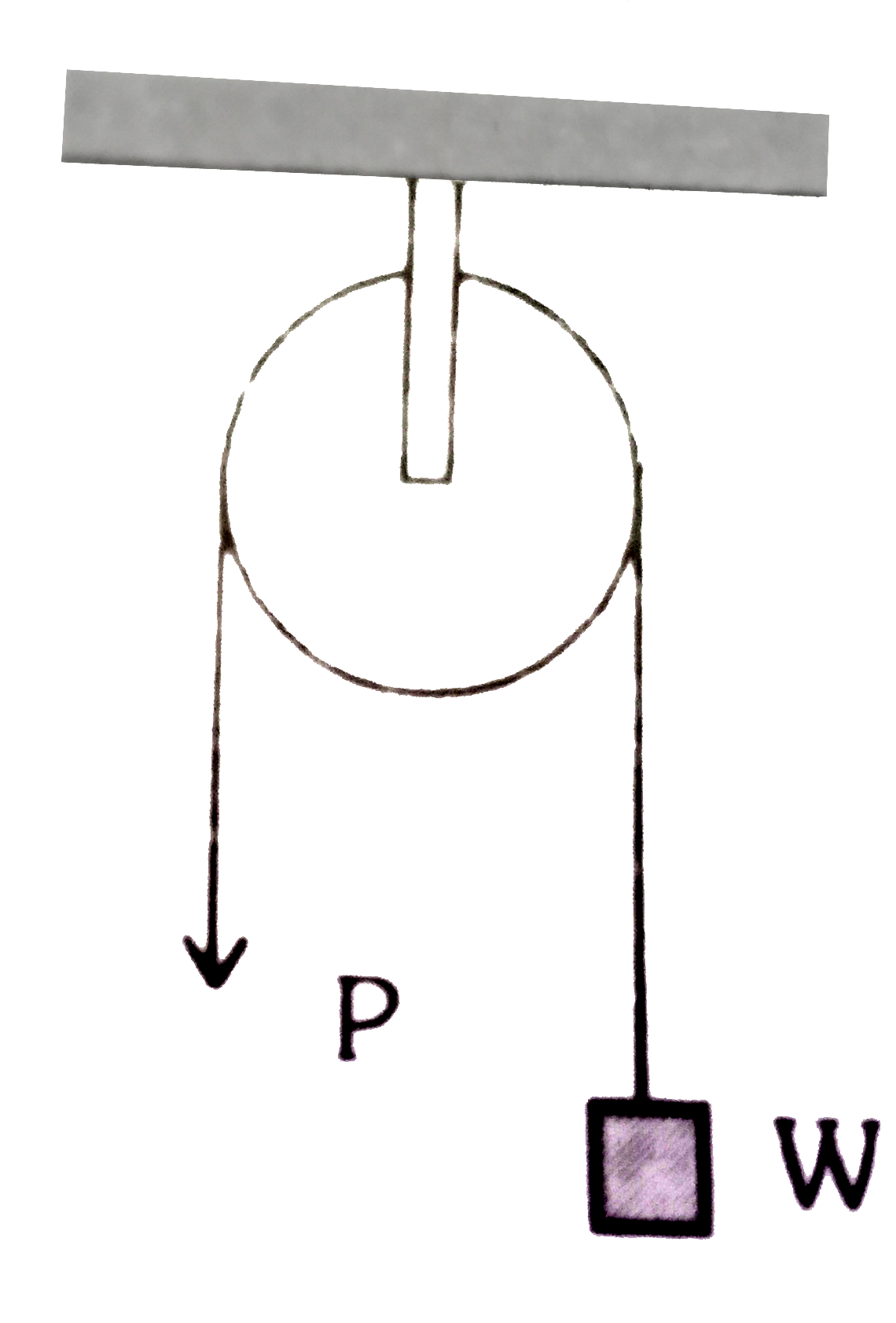 View Solution
View SolutionA disc of mass m and radius r is free to rotate about its centre as shown in the figure. A string is wrapped over its rim and a block of mass m is attached to the free end of the string. The system is released from rest. The speed of the block as it descends through a height h, is :-
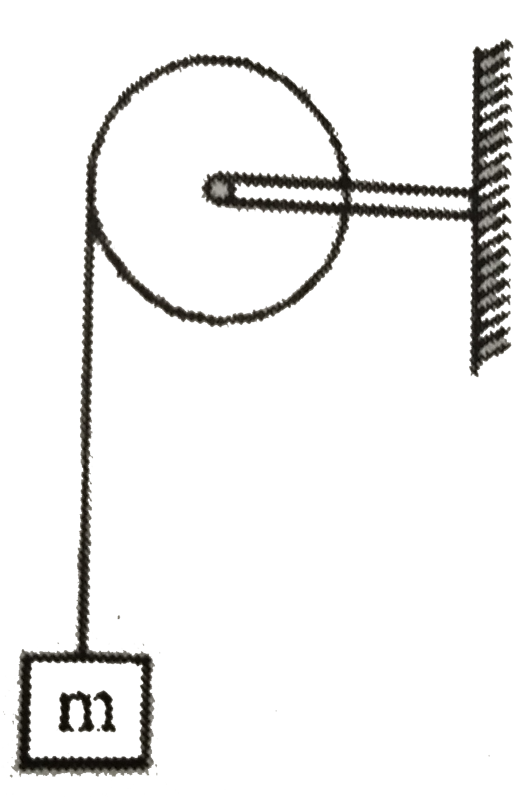 View Solution
View SolutionA heavy block of mass m is supported by a cord C attached to the ceiling, and another cord D is attached to the bottom of the block. If a sudden jerk is given to D, then
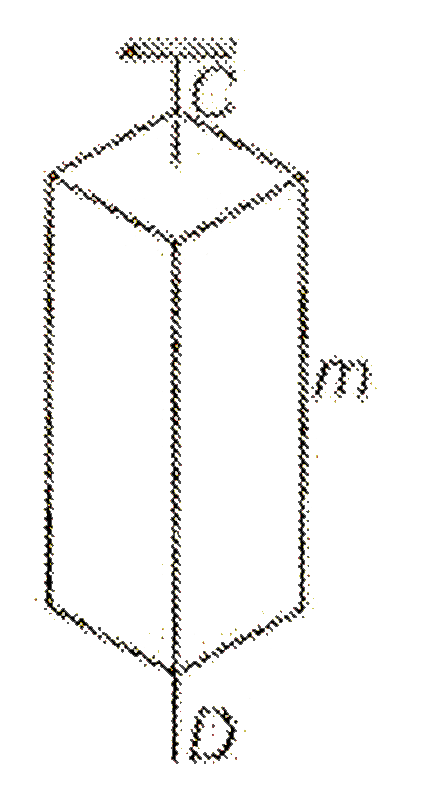 View Solution
View Solution

